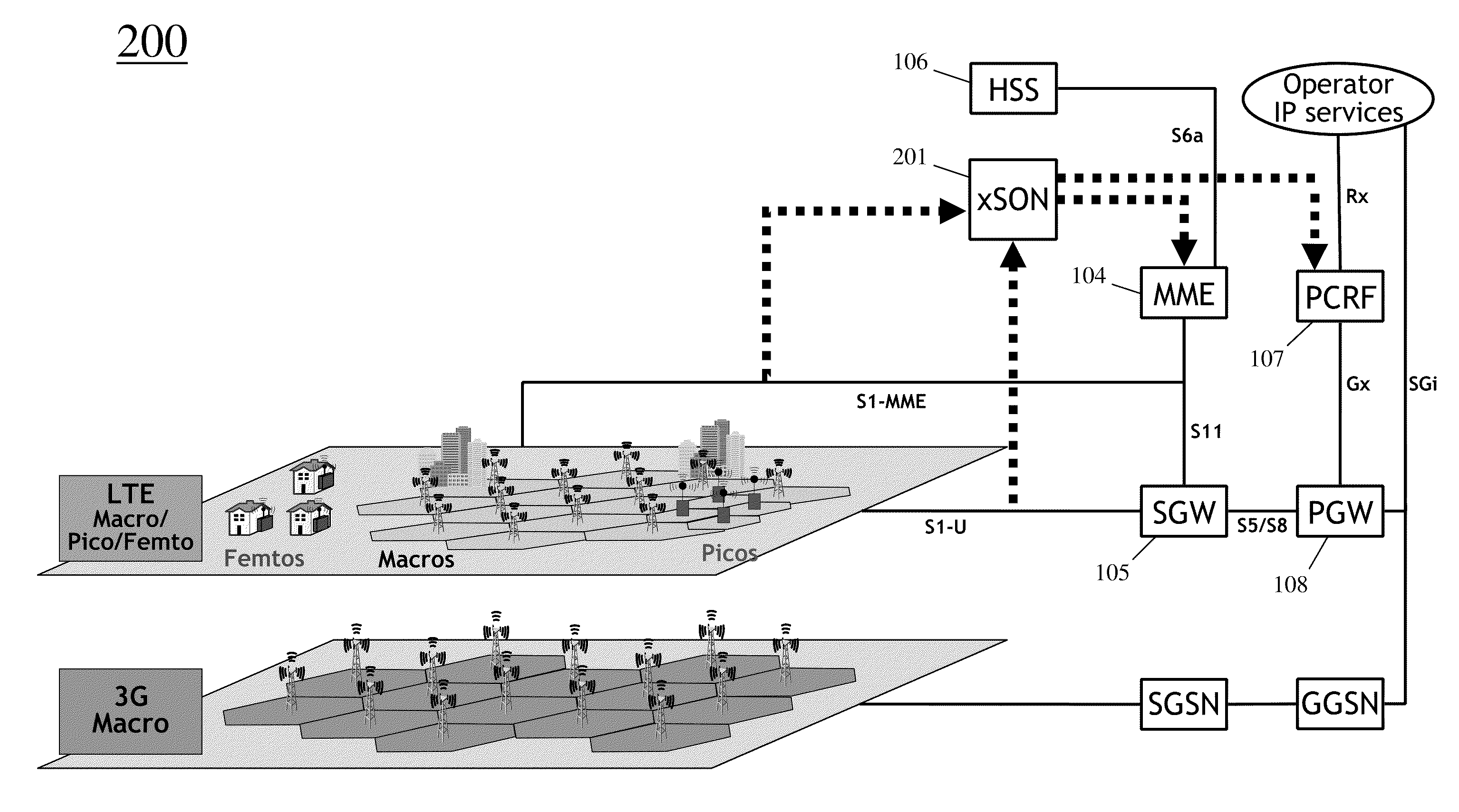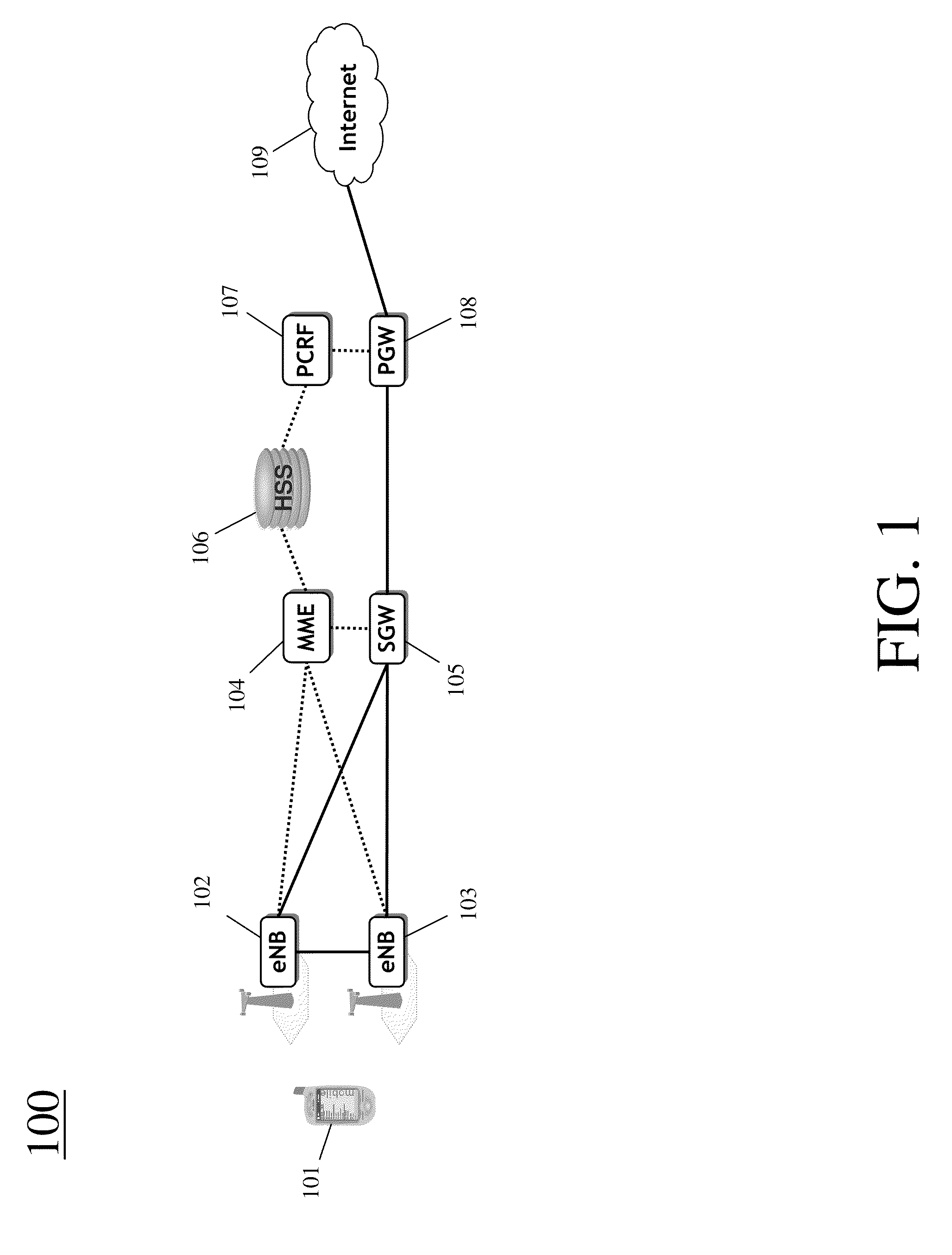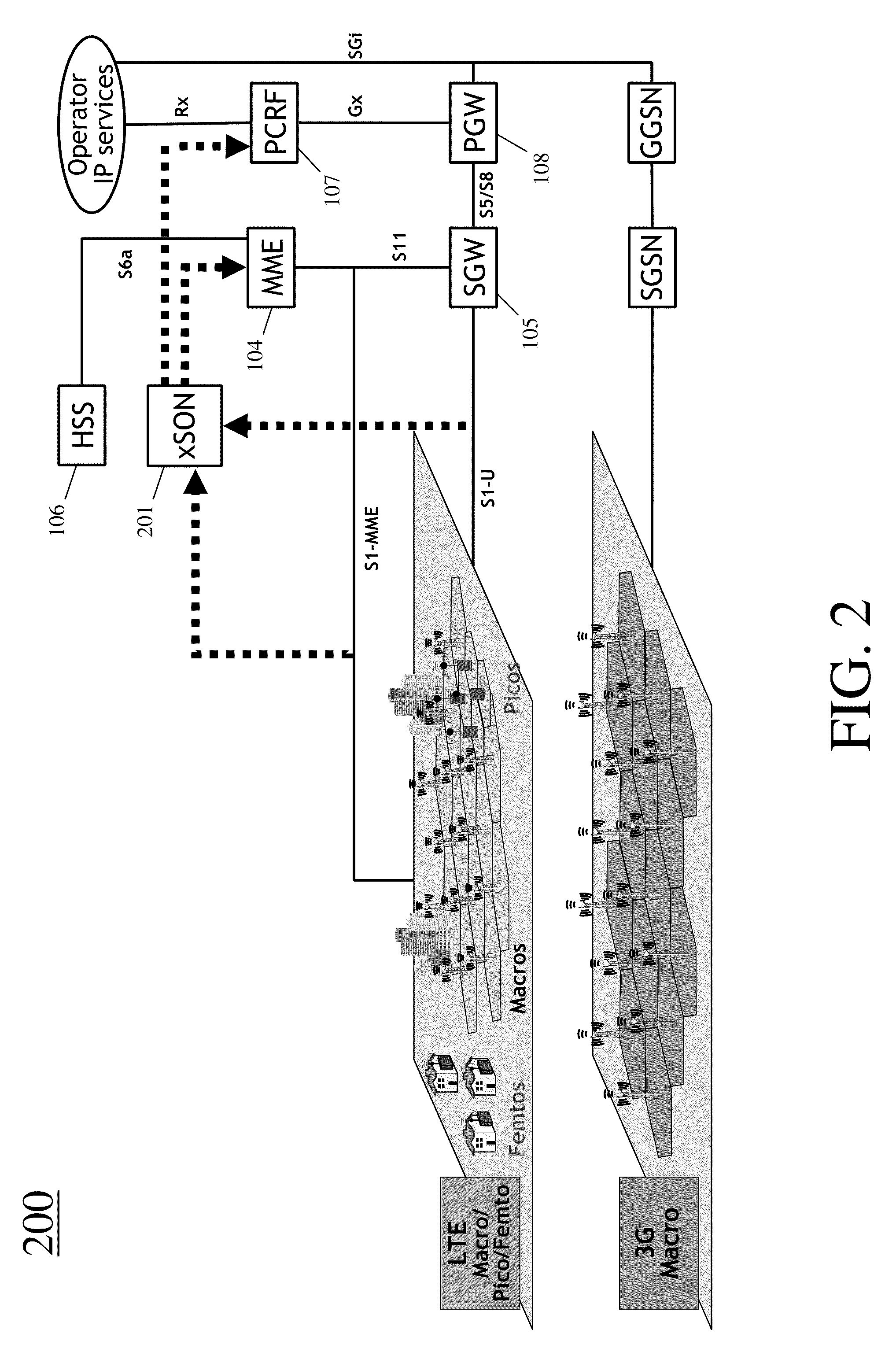Policy And Charging Rules Function In An Extended Self Optimizing Network
a technology of policy and charging rules and extended self-optimization network, applied in the field of communication systems, can solve problems such as a substantial decrease in the loading of macrocells and cores, and achieve the effects of reducing churn, reducing the load of macrocells, and improving network performan
- Summary
- Abstract
- Description
- Claims
- Application Information
AI Technical Summary
Benefits of technology
Problems solved by technology
Method used
Image
Examples
Embodiment Construction
[0014]An exemplary embodiment of the present invention can be better understood with reference to FIGS. 1 and 2. FIG. 1 depicts a wireless network 100 in accordance with an exemplary embodiment of the present invention. In accordance with an exemplary embodiment, wireless network 100 is an LTE E2E wireless network. Network 100 preferably includes eNB 102, eNB 103, MME 104, SGW 105, HSS 106, PCRF 107, and PGW 108. Network 100 preferably communicates with mobile unit 101 and internet 109.
[0015]An exemplary embodiment of the present invention converts E2E network 100 from an open loop system into a closed loop system via a new interface from one or more network monitoring elements into PCRF 107. This allows selected / filtered near-real-time network state data to be fed into PCRF 107 for policy decisions based on user and network policies, so that E2E network 100 can then self-optimize in compliance with existing 3GPP PCC and QoS architecture.
[0016]Note that although the above discussion...
PUM
 Login to View More
Login to View More Abstract
Description
Claims
Application Information
 Login to View More
Login to View More - R&D
- Intellectual Property
- Life Sciences
- Materials
- Tech Scout
- Unparalleled Data Quality
- Higher Quality Content
- 60% Fewer Hallucinations
Browse by: Latest US Patents, China's latest patents, Technical Efficacy Thesaurus, Application Domain, Technology Topic, Popular Technical Reports.
© 2025 PatSnap. All rights reserved.Legal|Privacy policy|Modern Slavery Act Transparency Statement|Sitemap|About US| Contact US: help@patsnap.com



